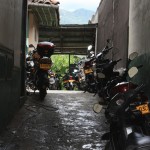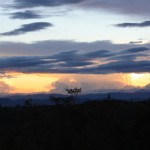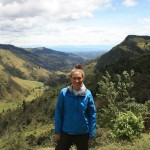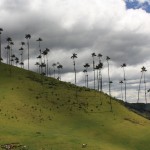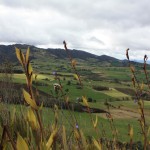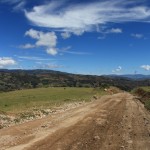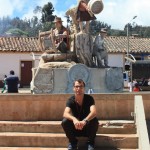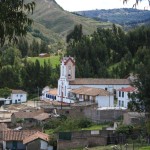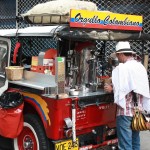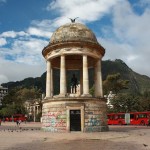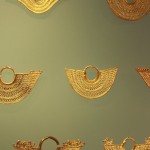The moment I read about Colombia’s coffee triangle (Pereira, Manizales and Armenia), I was fixated on a visit. Delicious coffee, rolling hills, perfect comfortable temperature – check, check and check. Following fellow overlanders advice (LifeRemotely and SeventeenBySix), we decided to visit Hacienda Venecia just south of Manizales and La Serrana in Salento, a little outside of Armenia.
- Driving into Colombia’s coffee triangle
Hacienda Venecia
I thought I had died and gone to heaven when we arrived at Venecia (northern point of the coffee triangle). Jorge greeted us in the parking lot with a smile and hand shake. He gave us the grand tour of the hostel which included a pool, ample common space, spotless bathrooms and a large well stocked kitchen. George and I nearly fell over when he showed us the professional espresso maker and told us coffee was free. FREE. He then proceeded to give us a demo. Trumpets sounded in the background.
- High ground
- Not too shabby
- The front porch of the hostel at Hacienda Venecia
- Nice pool to pass the time
Venecia is a large award winning coffee farm, so G and I decided to take the coffee tour. The tour was extremely educational, if not a little mind bending. My takeaway are as follows:
- Colombia can harvest at least twice at year, because they have two wet and two dry seasons which means fresher coffee.
- Colombia only exports the good stuff. This is controlled by a central organization to protect Colombia’s coffee brand.
- See last point. Because the good stuff leaves, Colombia’s coffee culture is what you might expect. Colombians prefer their coffee very sweet to mask the bitterness.
- Coffee roasting is complex (countless scents and flavors), so I’ve opted to just enjoy the final product.
- Hacienda Venecia
- A bean education
- Roasting time
- Cleaning and sorting
- Dry those suckers out
- Time for picking
- Walking the fields
- On the way to a roaster near you
With more time, we would have taking advantage of the close proximity to Los Nevados National Park – yet another reason to visit the area.
Salento and Hostel La Serrana
Knowing we had to keep moving, we pulled the espresso IVs out of our arms and headed south to Salento and Hostel La Serrana (southern end of the coffee triangle). Salento is another small colonial town getting popular with foreigners for it’s easy access to Valle de Cocora.
- Streets of Salento
- View of town from the mirador
- Moto anyone?
The first thing we set eyes on pulling into La Serrana was Vida’s doppelgänger, a Land Cruiser with the same tent owned by a Dutch couple. La Serrana is a nice big hostel with great views and lots of space, but without fail it is jammed packed. It is a growing trend for hostels like La Serrana to offer volunteer programs in exchange for food and lodging. Gardening was one of the volunteer jobs offered there.
- More views
- Vida’s doppelgänger
- View from La Serrana
- Working the garden
We hiked into Valle de Cocora (known for the sky high wax palms) the following day. It is a loop hike that takes you past farms and then through forests while you crisscross a river. Be prepared for mud. This is followed by plenty of switchbacks as you climb. Do not fret though, the good stuff soon begins. At the top, there is a nice little area with benches to have a snack. It is then time to hike down through the valley. The wax palm soldiers stand at attention in greeting. All-in-all, a pretty easy and pretty beautiful hike. If you’re feeling lazy, don’t do the loop. Hike in the opposite direction and skip the river bit.
- Crisscrossing the river on questionable foot bridges
- Top of the hike
- View from the top
- View of the valley
- Valley de Cocora
- A very happy camper
- Wax palms standing attention
- Is George actually thinking about kiting with that wind?
- Up, up and up.
- Soldiers
- Visit this place
I could have easily killed a week or two in Colombia’s coffee triangle. The coffee is just the beginning. There are plenty of ways to explore nature and appreciate your surroundings.















